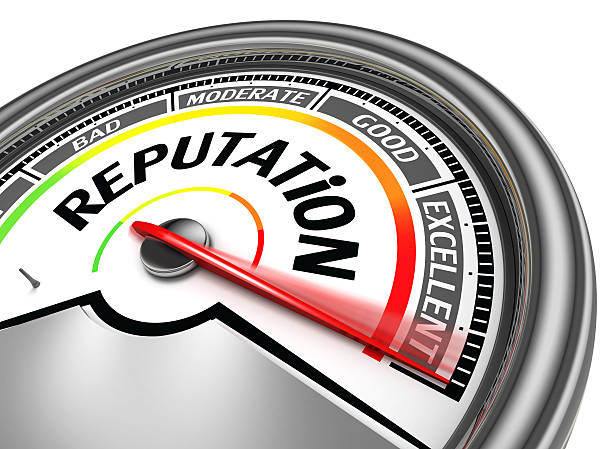Breaking Barriers: Developing Women Leaders for a Diverse Future
The Need for Women in Leadership: Advancing Diversity and Inclusion
In today’s rapidly changing world, organizations need leaders who can navigate complex challenges and drive innovation. Research has shown that diverse leadership teams, which include women in leadership positions, are better equipped to tackle these challenges and generate more successful outcomes. Developing women leaders is not only critical for individual career growth but is also crucial for business success and economic growth.
Despite the progress that has been made in recent years, women still face significant challenges when it comes to leadership positions. The gender pay gap, lack of access to senior positions, and gender bias are just some of the obstacles that women face. These barriers not only limit the opportunities for women but also harm organizations that miss out on the potential benefits of having a diverse leadership team.
One of the primary benefits of having diverse leadership teams is that they bring different perspectives, experiences, and insights to the table. This diversity of thought allows for more creative problem-solving and innovation, which leads to better decision-making and improved performance. Women in leadership roles also serve as role models for other women in the organization, which can help to attract and retain talent.
However, despite the benefits of diverse leadership teams, women are still underrepresented in leadership positions. Women currently make up just 7.4% of Fortune 500 CEOs and hold only 22% of senior management positions globally. The lack of representation is even more pronounced for women of color, who face additional barriers due to systemic racism and discrimination.
In addition to the lack of representation, women in leadership positions often face gender bias and stereotypes. These biases can manifest in subtle ways, such as assumptions about women’s leadership styles or their ability to balance work and family responsibilities. Research has shown that these biases can limit women’s opportunities for advancement and harm their careers.
Developing women leaders is critical for business success, economic growth, and social progress. Organizations that invest in developing their female talent will reap the benefits of diverse leadership teams, better decision-making, and improved performance. However, overcoming the challenges that women face in leadership positions requires a concerted effort from leaders at all levels of the organization to create a culture of inclusion and equality. In the following sections, we will explore the role of organizations in developing women leaders, the importance of self-development for women leaders, strategies for developing women leaders, and the importance of overcoming gender bias and stereotypes.
The Role of Organizations in Developing Women Leaders
Creating a culture of inclusion and equality is critical for developing women leaders. Organizations need to create an environment where women feel valued, respected, and supported in their career aspirations. This can be achieved by:
-
Setting clear diversity and inclusion goals: Organizations need to set clear goals for diversity and inclusion at all levels of the organization. These goals should be measurable and include targets for the recruitment, development, and promotion of women.
-
Providing opportunities for women to develop leadership skills: Organizations need to provide women with the opportunity to develop their leadership skills through training programs, workshops, and coaching. This can help women to build confidence, learn new skills, and prepare for leadership roles.
-
Offering mentorship and sponsorship programs: Mentorship and sponsorship programs can provide women with guidance and support from experienced leaders. These programs can help women to build relationships with senior leaders, gain visibility, and access to new opportunities.
-
Ensuring pay equity and fair promotions: Organizations need to ensure that women are paid fairly and equitably for their work. They should also ensure that promotions are based on merit and not gender or other biases.
Organizations play a critical role in developing women leaders. By creating a culture of inclusion and equality, providing opportunities for development, offering mentorship and sponsorship programs, and ensuring pay equity and fair promotions, organizations can support the development of women leaders. Women also need to take ownership of their development by identifying and overcoming personal barriers, developing emotional intelligence and resilience, building a support network, and investing in continuing education and professional development. Together, organizations and women can work towards creating a more diverse and inclusive leadership landscape.
The Importance of Self-Development for Women Leaders
Organizations also need to recognize the importance of self-development for women leaders. Self-development is critical for women leaders to build the skills and knowledge required for leadership roles. Women who invest in their development are more likely to overcome personal barriers, build confidence, and develop the emotional intelligence and resilience required for effective leadership.
-
Identifying and Overcoming Personal Barriers: Women leaders need to identify and overcome personal barriers that may be holding them back from reaching their full potential. These barriers could be related to confidence, communication skills, or work-life balance. Women who struggle with confidence may benefit from building a growth mindset, setting achievable goals, and seeking feedback to improve. Those who struggle with communication skills may benefit from training or coaching to improve their verbal and written communication. Women who struggle with work-life balance may benefit from setting boundaries, delegating tasks, and seeking support from colleagues and family members.
-
Developing Emotional Intelligence and Resilience: Emotional intelligence and resilience are critical skills for effective leadership. Women leaders need to develop these skills to manage their emotions, build relationships, and handle difficult situations. Emotional intelligence involves being aware of one’s own emotions and the emotions of others, regulating one’s emotions, and using emotions to guide thinking and behavior. Resilience involves the ability to cope with stress, setbacks, and adversity. Women leaders who develop emotional intelligence and resilience are better equipped to handle the challenges of leadership and build strong relationships with their teams.
-
Building a Support Network: Women leaders need to build a support network of mentors, peers, and allies who can provide guidance, support, and feedback. Mentors can provide advice and share their experiences, while peers can offer support and provide opportunities for networking. Allies can advocate for women leaders and help to create a culture of inclusion and equality. Building a support network can help women leaders to navigate the challenges of leadership and overcome obstacles.
-
Continuing Education and Professional Development: Women leaders need to invest in their education and professional development to stay up-to-date with industry trends and best practices. This can involve attending conferences, workshops, and training programs, as well as reading books and articles related to leadership and management. Women leaders who invest in their education and professional development are better equipped to lead their teams and make informed decisions.
Self-development is critical for women leaders to build the skills and knowledge required for effective leadership. Women leaders who invest in their development are more likely to overcome personal barriers, develop emotional intelligence and resilience, build a support network, and stay up-to-date with industry trends and best practices. By taking ownership of their development, women leaders can become more effective and influential leaders.
Strategies for Developing Women Leaders
Developing women leaders requires a strategic and intentional approach. Organizations need to create development plans tailored to individual needs, provide challenging assignments and stretch goals, offer feedback and coaching, and encourage women to take on leadership roles in industry organizations. These strategies can help women to build their skills, gain experience, and prepare for leadership roles.
-
Creating Development Plans: Organizations need to create development plans tailored to individual needs. These plans should identify the skills and experiences that women need to develop to reach their career goals. They should also include clear goals, action plans, and timelines. Development plans can help women to focus on their development, track their progress, and measure their success.
-
Providing Challenging Assignments and Stretch Goals: Organizations need to provide women with challenging assignments and stretch goals that push them out of their comfort zones. These assignments should provide opportunities for women to develop new skills, gain experience, and demonstrate their leadership potential. Organizations should also provide support and resources to help women succeed in these assignments.
-
Offering Feedback and Coaching: Organizations need to provide women with regular feedback and coaching to help them identify their strengths and areas for improvement. Feedback should be specific, timely, and actionable. Coaching should provide guidance and support to help women develop their skills and overcome challenges. Women should also have access to mentors who can provide guidance and support.
-
Encouraging Women to Take on Leadership Roles in Industry Organizations: Organizations should encourage women to take on leadership roles in industry organizations, such as professional associations, industry groups, and non-profit organizations. These roles provide opportunities for women to develop their leadership skills, build their networks, and gain visibility in their industry.
In addition to these strategies, organizations need to be intentional about promoting diversity and inclusion in their leadership development programs. This includes:
-
Creating a culture of inclusion and equality: Organizations need to create a culture where diversity and inclusion are valued and celebrated. This can be achieved by setting clear diversity and inclusion goals, providing training on unconscious bias, and promoting diverse representation at all levels of the organization.
-
Ensuring equal access to development opportunities: Organizations need to ensure that all employees, regardless of gender or other factors, have equal access to development opportunities. This includes providing development opportunities to employees in all roles and at all levels of the organization.
-
Advocating for equal opportunities and fair treatment: Organizations need to advocate for equal opportunities and fair treatment for women in leadership roles. This includes advocating for pay equity, promoting diverse representation on boards and in senior leadership positions, and addressing gender bias and stereotypes.
Developing women leaders requires a strategic and intentional approach. Organizations need to create development plans tailored to individual needs, provide challenging assignments and stretch goals, offer feedback and coaching, and encourage women to take on leadership roles in industry organizations. Organizations also need to be intentional about promoting diversity and inclusion in their leadership development programs by creating a culture of inclusion and equality, ensuring equal access to development opportunities, and advocating for equal opportunities and fair treatment. By taking these steps, organizations can support the development of women leaders and build more diverse and inclusive leadership teams.
Overcoming Gender Bias and Stereotypes
Gender bias and stereotypes are major barriers to women’s advancement in leadership positions. These biases can limit women’s opportunities for advancement and harm their careers. To develop women leaders, organizations need to recognize and address gender bias and stereotypes.
-
Recognizing Unconscious Bias: Unconscious bias refers to the implicit associations that people make between groups and certain traits or qualities. These biases can lead to assumptions about women’s leadership styles, their ability to balance work and family responsibilities, and their potential for advancement. Organizations need to provide training on unconscious bias to help managers and employees recognize and overcome their biases.
-
Addressing Gender Stereotypes: Gender stereotypes are deeply ingrained cultural beliefs about what men and women should do, how they should behave, and what they are capable of. These stereotypes can lead to assumptions about women’s roles and abilities in the workplace. Organizations need to promote diversity and inclusion by challenging gender stereotypes and promoting gender equality.
-
Promoting Diversity and Inclusion: Organizations need to promote diversity and inclusion by creating a culture where everyone feels valued and respected. This includes promoting diverse representation at all levels of the organization, providing equal opportunities for development and advancement, and ensuring fair treatment and pay equity.
-
Advocating for Equal Opportunities: Organizations need to advocate for equal opportunities for women in leadership positions. This includes advocating for pay equity, promoting diverse representation on boards and in senior leadership positions, and addressing gender bias and stereotypes.
-
Providing Role Models and Mentors: Women need to see other women in leadership roles to be inspired and motivated to pursue leadership positions. Organizations can provide role models by promoting women in leadership positions and celebrating their achievements. Organizations can also provide mentors who can provide guidance and support to women as they navigate their careers.
Gender bias and stereotypes are major barriers to women’s advancement in leadership positions. To develop women leaders, organizations need to recognize and address these biases by providing training on unconscious bias, promoting diversity and inclusion, advocating for equal opportunities, and providing role models and mentors. By taking these steps, organizations can support the development of women leaders and build more diverse and inclusive leadership teams.
Case Studies: Successful Women Leaders and Their Strategies
To gain insight into the strategies and best practices for developing women leaders, it can be helpful to examine the experiences of successful women leaders from various industries. The following case studies highlight the strategies and approaches that these women used to overcome barriers and achieve success.
-
Indra Nooyi, Former CEO of PepsiCo: Indra Nooyi is a trailblazer in the corporate world, having served as the CEO of PepsiCo from 2006 to 2018. Nooyi attributes her success to her ability to embrace change and take calculated risks. She also stresses the importance of having a support system, including mentors, sponsors, and a strong network. Nooyi has been a vocal advocate for gender equality in the workplace and has worked to promote diversity and inclusion at PepsiCo.
-
Melinda Gates, Co-Chair of the Bill and Melinda Gates Foundation: Melinda Gates is a philanthropist and advocate for women’s empowerment. Gates has been vocal about the need for greater investment in women’s education, health, and economic opportunities. She has also been a strong advocate for paid family leave and affordable childcare. Gates emphasizes the importance of women supporting other women and building strong networks to advance their careers.
-
Reshma Saujani, Founder and CEO of Girls Who Code: Reshma Saujani is a social entrepreneur and the founder of Girls Who Code, a non-profit organization that aims to close the gender gap in technology. Saujani has been a vocal advocate for girls and women in STEM fields and has worked to provide opportunities for girls to develop coding skills. Saujani emphasizes the importance of taking risks and embracing failure, as well as the importance of having a support system.
-
Mary Barra, CEO of General Motors: Mary Barra is the first female CEO of General Motors and one of the few women to lead a major automotive company. Barra has emphasized the importance of innovation and has worked to position General Motors as a leader in electric and autonomous vehicles. She also stresses the importance of creating a culture of inclusion and diversity, and has worked to promote women and minorities to leadership positions.
-
Ursula Burns, Former CEO of Xerox: Ursula Burns is a business executive and the former CEO of Xerox. Burns is the first black woman to lead a Fortune 500 company and has been a vocal advocate for diversity and inclusion. Burns stresses the importance of perseverance and hard work, as well as the importance of building relationships and developing a strong network.
Successful women leaders can provide valuable insights into the strategies and approaches that are effective in developing women leaders. These women emphasize the importance of taking risks, embracing failure, building strong networks, and advocating for diversity and inclusion. By learning from the experiences of these successful women leaders, organizations can develop more effective strategies for supporting the development of women leaders and building more diverse and inclusive leadership teams.
Empowering Women to Lead: Creating a More Inclusive Future
Developing women leaders is critical for creating more diverse and inclusive leadership teams. As the world becomes more complex and interconnected, organizations need leaders who can navigate uncertainty, lead with empathy and resilience, and create positive impact. Women leaders bring unique perspectives, skills, and experiences that can contribute to the success of organizations and society as a whole.
To develop women leaders, organizations need to create a culture of inclusion and equality, provide opportunities for development, offer mentorship and sponsorship programs, and ensure pay equity and fair promotions. Women also need to take ownership of their development by identifying and overcoming personal barriers, developing emotional intelligence and resilience, building a support network, and investing in continuing education and professional development.
Addressing gender bias and stereotypes is critical for advancing women in leadership positions. Organizations need to recognize and address unconscious bias, challenge gender stereotypes, promote diversity and inclusion, advocate for equal opportunities, and provide role models and mentors. By taking these steps, organizations can create a more diverse and inclusive leadership landscape.
The future of women in leadership is promising, but there is still work to be done. Organizations and individuals need to continue to advocate for gender equality, promote diversity and inclusion, and create opportunities for women to reach their full potential. By working together, we can create a world where women are valued, respected, and empowered to lead.






